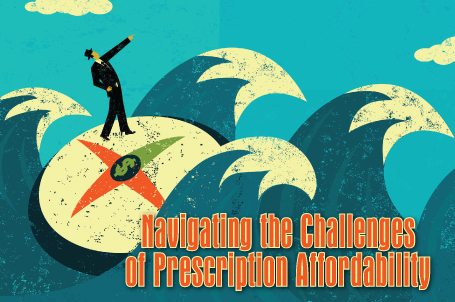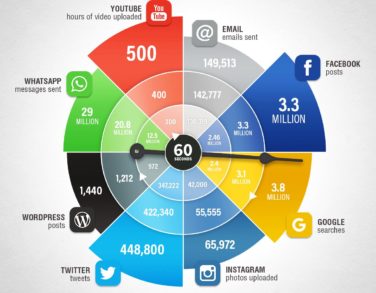The pharmaceutical industry is witnessing a deep shift in the traditional approach to patient disclosure in clinical trials. While most companies are struggling to meet basic compliance requirements, a longer-term objective has emerged that is shifting the transparency goal post. Clinical trial results information is typically disclosed on registries such as ClinicalTrials.gov and EudraCT. This information is provided in a very technical format that does not necessarily support ongoing engagement of trial participants. To meet policy and legal requirements, some companies are also providing trial results summaries (also known as plain language or lay language summaries) to trial participants. Trial results summaries are brief, non-technical accounts of trial results that should be presented in a non-promotional and unbiased context.
Current Paper-based Practices
Many clinical trial sponsors are still using paper-based processes to deliver trial results summaries to trial participants once the trial has been completed. The paper copies of trial results summaries are mailed to the study site. The study site staff usually has to request the trial documentation from off-site storage. Once the request has been fulfilled and the study documentation is retrieved, the staff can then go about the task of mailing the trial results summaries to trial participants.
Numerous delays take place in this process because by the time that trial results summaries are available, all contact information for trial participants has been archived. Delays in getting access to the study information add up over time. In addition, within the year, many trial participants relocate. In this case, the information is mailed to the trial participant but there is no guarantee that it is actually received. The gap in the notification process and the lack of controls or receipt tracking results in most patients not receiving the results summaries. The failure of the process comes at the expense of the patient.
In this scenario, the patient is put in the position of being at the mercy of an antiquated, paper-based process. They have no control over what information they receive or when they receive it.
Some sponsors are posting trial results summaries to their own branded websites but this practice brings its own challenges. Trial results summaries may be perceived as promotional when shown on a branded site and may also be interpreted without the context of the results of other studies in a clinical program.
The distribution of the content and its presentation in an unbiased context create a significant obstacle for sponsors who are trying to improve patient engagement throughout the clinical research process.
Emerging Perspectives on Transparency
Clinical trial transparency as a broader topic is gaining a great deal of exposure in recent months. Patients, patient advocates, researchers, investors, and industry watch dogs are pressuring clinical trial sponsors to increase transparency. Evolving regulations are requiring that more data is disclosed to health authorities in shorter timeframes. Forward-thinking clinical trial sponsors are evaluating their own efforts at transparency, not only from a compliance perspective, but also from a patient engagement perspective.
The current process for distributing trial results summaries to trial participants highlights a significant opportunity to improve patient communications. Clinical trial sponsors focusing on two key aspects of the process can obtain ongoing benefits from their efforts:
Distribution: The challenges inherent in the distribution of trial results summaries beg for a web-based solution that enables posting of content on a readily accessible portal. This would allow the general public to inquire about trial results summaries, while also providing a means for trial participants to access their study information from anywhere in the world.
Trial participants can subscribe to their specific study and receive reminders and updates on the availability of the trial results summaries, shifting the focus back to the patient and what information he/she chooses to receive. It also shortens the time required to distribute the information because posted results summaries can instantly be viewed by all patients. One notification can alert an entire study participant population that the results are available.
Non-promotional context: A neutral portal at which trial results summaries from numerous sponsors are aggregated provides a non-promotional, unbiased environment for results summaries to be made available. Sponsors can ensure that results summaries are not perceived as promotional content by presenting them in a non-biased setting in which the collection of trial results summaries continues to increase over time. Trial participants can access one location for simple, user-friendly clinical trial information without being influenced by sponsor branding and promotional announcements.
Taking A New Approach to Patient Engagement
Life sciences companies are now rethinking their traditional approach. The new approach includes three important elements:
- Recognizes the ethical obligation to report trial results to trial participants.
- Leverages commonly used technologies to efficiently and reliably distribute trial results.
- Empowers patients to determine when and what information they receive.
The portal concept delivers a major process upgrade to current practices. This approach also completely shifts focus to the needs of the trial participant without creating an additional burden for the clinical trial sponsor. In fact, it can be expected to improve timeliness, accuracy, and probability that patients receive their trial results summaries. As the portal is populated with trial results summaries from various sponsors, its value to the patient community continues to increase.
Sponsor and Patient Benefits of an Emerging Business Practice
With the combined focus on patient disclosure and use of “everyman” technologies to communicate with patients, compelling benefits can be expected for both trial participants and sponsors.
Trial participants can expect to access their trial results summaries more quickly as delays in current distribution models are eliminated. These patients also gain the ability to manage the frequency of reminders and updates they receive thereby becoming more active participants in managing their own health information. Because the trial results summaries are online and available 24/7, these patients have constant access and don’t have to maintain paper copies of the results summaries. Easy access will also facilitate improved understanding of the content.
Finally, this model for trial results summaries distribution, online presentation, and email notifications acknowledges the major contribution that trial volunteers make to the clinical research process. It honors their involvement by directly addressing their health information needs in an efficient and effective manner.
Clinical trial sponsors will gain benefits from this approach as well. Most importantly, it will help them fulfill their ethical, corporate, and legal obligations to share clinical trial results information with stakeholders. By replacing costly and time-consuming paper processes, the organization improves operational performance and delivers on their commitment to patients.
Posting to a common portal also allows sponsors to maintain control of content to ensure that it is aligned with information that is being disclosed via other approved channels (ClinicalTrials.gov, EudraCT, etc.). The portal concept offers a non-promotional environment in which sponsors can present their trial results summaries. This ensures that patients don’t perceive the information as promotional or biased. All of these benefits to the sponsor also contribute positively to their corporate reputation and brand integrity.
The Future of Clinical Trials
Technology continues to open up new opportunities to improve patient communication, education, and engagement. Trial results summaries are simply a gateway to a much broader definition of patient disclosure as we redefine how sponsors and patients interact throughout the clinical research process. Forward-thinking sponsors are looking at transparency and disclosure programs with a fresh perspective. They are recognizing the connection between patient engagement, transparency, and stronger relationships across the marketplace and they are using technology to reinforce their success in all aspects of these relationships.







